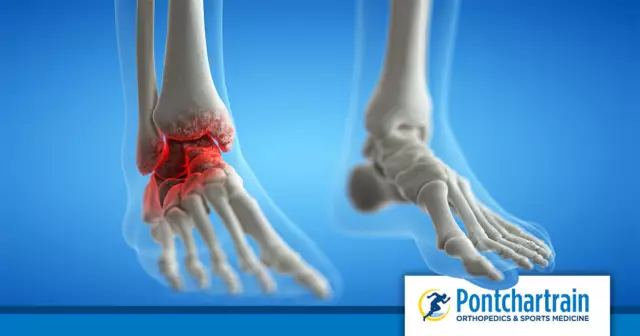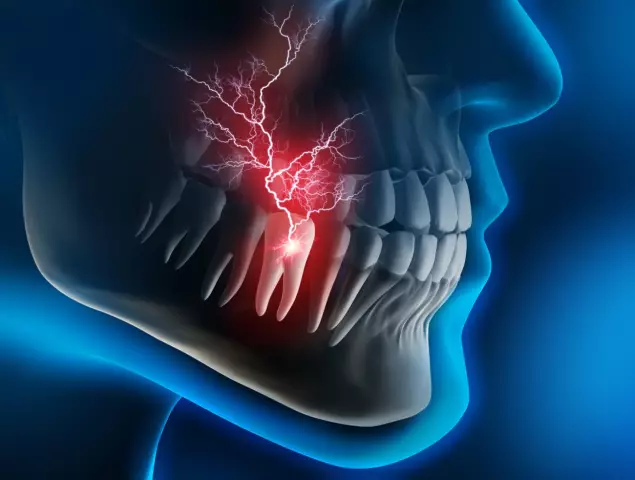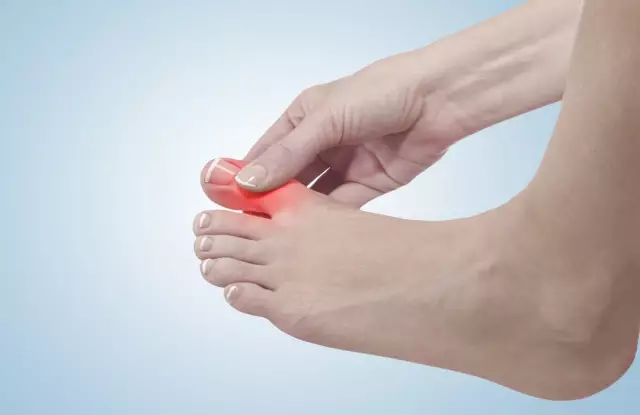- Author Rachel Wainwright [email protected].
- Public 2023-12-15 07:39.
- Last modified 2025-11-02 20:14.
Why does the forehead hurt

The severity and pressure in the forehead, pain that radiates to the eyes and temples are not the most pleasant sensations. Meanwhile, almost every person in his life has come across this. There are many causes of forehead headaches. It can occur even in perfectly healthy people, be acute, throbbing, pressing, stabbing, last for a short time or for several days.
Forehead hurts, reasons
Frontal pain is one of the most common types of headaches. For effective treatment, first of all, it is necessary to establish the causes of this ailment. They can be divided into four groups:
- Forehead injuries;
- Vascular diseases of the brain;
- Infectious and inflammatory diseases;
- Diseases of the nervous system.
Often, as a result of a bruise, headaches in the forehead area can be observed. With this type of injury, only soft tissue damage occurs, and a subcutaneous hematoma (bruise) occurs at the site of the injury, which subsequently resolves. Sometimes, with a strong blow, a fracture of the frontal bone can occur. Moreover, such injuries are usually accompanied by concussion or contusion of the brain.
If a bone fracture occurs as a result of an injury, then short-term loss of consciousness, dizziness, nausea, and vomiting may occur. At the site of the impact, a well-defined subcutaneous hematoma appears, deformation of the bone, while the forehead hurts a lot. Visual impairment is also possible. If there is even the slightest suspicion of a bone fracture or a concussion, then the victim must be shown computed tomography or radiography.
Also, the forehead often hurts in the presence of vascular diseases of the brain (venous arteritis, ischemic vascular disease). The cranial cavity contains a large number of vessels that deliver blood to the brain. It happens that the forehead hurts due to impaired blood flow. When the pressure in the cranial arteries and veins increases, the nerve endings are irritated, which ultimately leads to severe pain. Other symptoms of high blood pressure:
- Dizziness;
- Nausea, vomiting;
- Weakness, lethargy, pallor;
- Heart palpitations, increased sweating;
- Feeling of pressure in the eyes.
Also, the forehead hurts with low cranial pressure, and the discomfort is of a girdle nature, that is, it is given to the back of the head and temples. This happens as a result of narrowing of the arteries of the brain in atherosclerosis, thrombosis, tumors, vegetative-vascular dystonia, in diseases of the thyroid gland.
A severe headache in the forehead area can be a symptom of viral or infectious diseases. With flu, SARS or sore throat, along with the main symptoms (fever, chills, weakness), patients complain of discomfort and tension in the frontal zone. Similar sensations are also characteristic in malaria, typhoid, meningitis, encephalitis.
The most obvious symptom of the presence of inflammatory diseases such as frontal sinusitis and sinusitis is a throbbing or aching pain in the forehead. Frontal sinusitis is characterized by the development of an inflammatory process in the frontal sinuses, located in the thickness of the bone, just above the nose, and is a complication of colds or viral infections. With sinusitis, inflammation develops in the maxillary sinuses located on the sides of the nose. In this case, the patient has general weakness, malaise, chills, nasal discharge, and his forehead also hurts.
Most often, headaches are associated with the development of neuralgia or neuritis of the first branch of the trigeminal nerve. They are paroxysmal in nature, are not accompanied by fever, nasal discharge. During an attack, lacrimation, redness of the forehead, soreness when pressing on the eyebrow is possible.
Burning one-sided pain in the forehead, the so-called cluster or bundle, usually occurs spontaneously, for no apparent reason, and is very painful. As a rule, attacks last no longer than 15 minutes, but they can occur several times a day.
Another reason that the forehead hurts is migraine. It is accompanied by sudden, intense and throbbing pain. Often during attacks there is nausea, vomiting. Usually this disease occurs in women and is inherited.
In addition to the listed diseases, headaches in the frontal zone can occur as a result of prolonged tension of the muscles of the head and neck, nervous stress.
Why forehead and eyes hurt
Some of the main causes of pain in the eyes and forehead include:
- Fatigue;
- Overwork;
- Stress;
- Long-term work at the computer.
In this case, to get rid of unpleasant sensations and discomfort, it is enough to rest, sleep well, and take a walk in the fresh air.
Also, the forehead and eyes often hurt with migraines, while visual impairment or photophobia is observed. To alleviate unpleasant symptoms, you can take pain relievers, try to relax in a room where there is no bright light and loud sounds.
Sometimes pain in the eyes and forehead occurs with increased intracranial pressure, intraocular pressure, concussion, intracranial hematoma. To determine the exact cause of the pain, you need to be examined by a specialist.
Other reasons that the forehead and eyes hurt: cerebral aneurysm, possible pre-stroke condition, meningitis. Each of these listed diseases is dangerous. And if the pain syndrome was not caused by overwork, stress or migraine, it is important to see a doctor as soon as possible.
For what reasons forehead and temples hurt
Headache that occurs in the forehead and radiates to the temporal lobe is considered a common occurrence. It can appear paroxysmal, present as a dull, throbbing pain in one or both temples. These painful sensations are often associated with pressure on the nerves in the upper back, neck and jaw, which are connected to the nerves in the forehead and temples.
But mostly the forehead and temples hurt in the presence of certain diseases:
- Infectious diseases (angina, brucellosis, Lyme disease) are often accompanied by pain in the temporal and frontal zones;
- A migraine can cause an acute headache that gets worse with movement or walking. Also, at the same time, there is an increased sensitivity to odors and taste of products, general weakness. These attacks usually last for several hours;
-

Diseases that cause headaches in the forehead Poisoning often causes not only indigestion, nausea, vomiting, but also pain in the forehead and temples. Moreover, the most common intoxication is alcoholic, therefore, after a feast, the head hurts;
- Hormonal disorders;
- Lack of sleep;
- Fasting for more than 24 hours;
- Low intracranial pressure.
With regular and severe headaches, you should definitely see a doctor in order to prevent the development of more serious diseases.
YouTube video related to the article:
Found a mistake in the text? Select it and press Ctrl + Enter.






